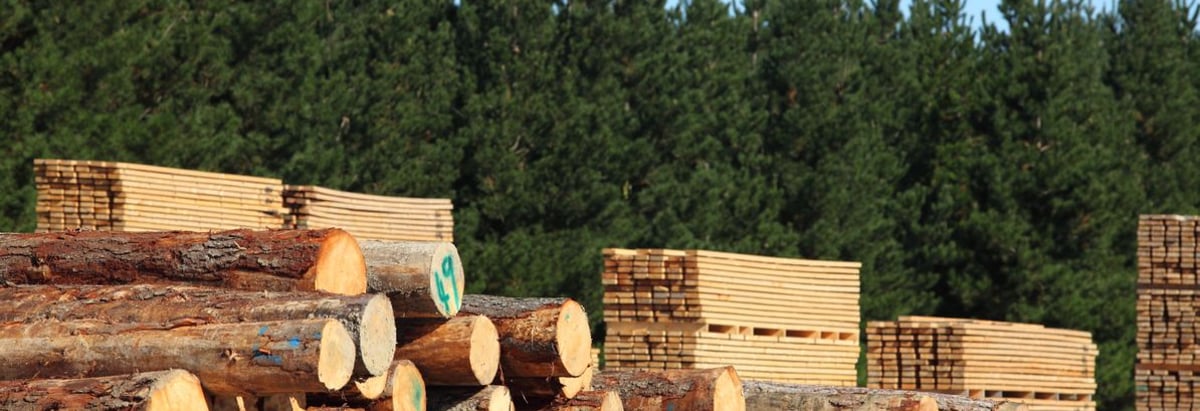Stock Analysis
- India
- /
- Paper and Forestry Products
- /
- NSEI:AIROLAM
Investors Met With Slowing Returns on Capital At Airo Lam (NSE:AIROLAM)

If we want to find a stock that could multiply over the long term, what are the underlying trends we should look for? Firstly, we'd want to identify a growing return on capital employed (ROCE) and then alongside that, an ever-increasing base of capital employed. Ultimately, this demonstrates that it's a business that is reinvesting profits at increasing rates of return. So, when we ran our eye over Airo Lam's (NSE:AIROLAM) trend of ROCE, we liked what we saw.
What Is Return On Capital Employed (ROCE)?
For those that aren't sure what ROCE is, it measures the amount of pre-tax profits a company can generate from the capital employed in its business. Analysts use this formula to calculate it for Airo Lam:
Return on Capital Employed = Earnings Before Interest and Tax (EBIT) ÷ (Total Assets - Current Liabilities)
0.19 = ₹168m ÷ (₹1.9b - ₹1.0b) (Based on the trailing twelve months to March 2024).
Thus, Airo Lam has an ROCE of 19%. On its own, that's a standard return, however it's much better than the 12% generated by the Forestry industry.
See our latest analysis for Airo Lam
While the past is not representative of the future, it can be helpful to know how a company has performed historically, which is why we have this chart above. If you'd like to look at how Airo Lam has performed in the past in other metrics, you can view this free graph of Airo Lam's past earnings, revenue and cash flow.
What Can We Tell From Airo Lam's ROCE Trend?
While the returns on capital are good, they haven't moved much. The company has consistently earned 19% for the last five years, and the capital employed within the business has risen 98% in that time. Since 19% is a moderate ROCE though, it's good to see a business can continue to reinvest at these decent rates of return. Over long periods of time, returns like these might not be too exciting, but with consistency they can pay off in terms of share price returns.
Another thing to note, Airo Lam has a high ratio of current liabilities to total assets of 53%. This can bring about some risks because the company is basically operating with a rather large reliance on its suppliers or other sorts of short-term creditors. While it's not necessarily a bad thing, it can be beneficial if this ratio is lower.
In Conclusion...
The main thing to remember is that Airo Lam has proven its ability to continually reinvest at respectable rates of return. On top of that, the stock has rewarded shareholders with a remarkable 329% return to those who've held over the last five years. So while the positive underlying trends may be accounted for by investors, we still think this stock is worth looking into further.
Airo Lam does have some risks, we noticed 2 warning signs (and 1 which is significant) we think you should know about.
If you want to search for solid companies with great earnings, check out this free list of companies with good balance sheets and impressive returns on equity.
New: Manage All Your Stock Portfolios in One Place
We've created the ultimate portfolio companion for stock investors, and it's free.
• Connect an unlimited number of Portfolios and see your total in one currency
• Be alerted to new Warning Signs or Risks via email or mobile
• Track the Fair Value of your stocks
Have feedback on this article? Concerned about the content? Get in touch with us directly. Alternatively, email editorial-team (at) simplywallst.com.
This article by Simply Wall St is general in nature. We provide commentary based on historical data and analyst forecasts only using an unbiased methodology and our articles are not intended to be financial advice. It does not constitute a recommendation to buy or sell any stock, and does not take account of your objectives, or your financial situation. We aim to bring you long-term focused analysis driven by fundamental data. Note that our analysis may not factor in the latest price-sensitive company announcements or qualitative material. Simply Wall St has no position in any stocks mentioned.
Have feedback on this article? Concerned about the content? Get in touch with us directly. Alternatively, email editorial-team@simplywallst.com
About NSEI:AIROLAM
Airo Lam
Engages in the production, processing, and marketing of decorative laminate sheets and plywood boards for residential and commercial applications in India.

